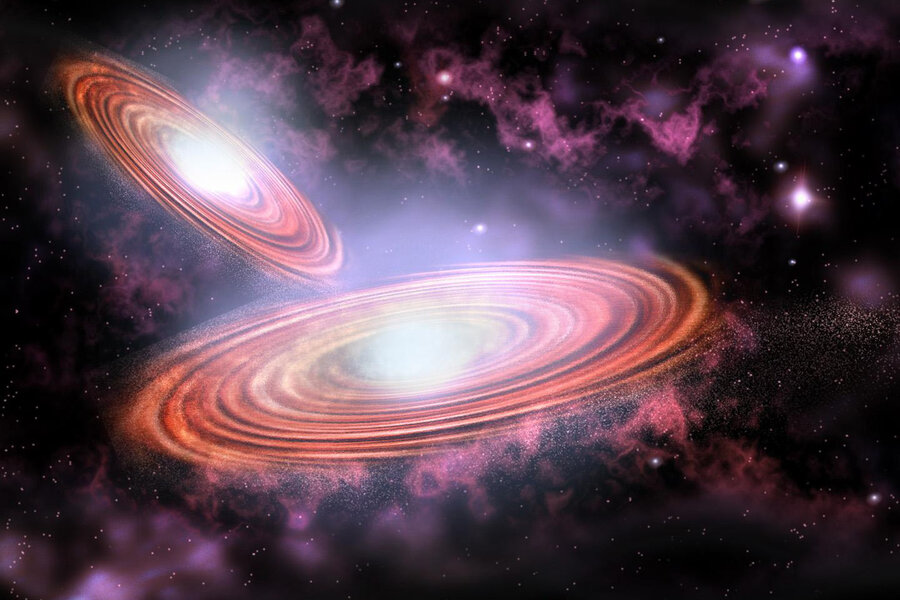What happens when two supermassive black holes smash together?
Loading...
A catastrophe of cosmic proportions will take place, scientists predict, when two black holes crash into each other.
The good news is that it won’t happen for another 100,000 years.
In a new study, astrophysicists from Columbia University found that a pair of closely orbiting supermassive black holes in the Virgo constellation are a lot closer than scientists had thought — a mere light-week apart. In the case of collision, a burst of gravitational waves would surge through space-time itself. The black holes, which are 3.5 billion light-years away from Earth, offer researchers insight on the growth of galaxies and even the universe.
A supermassive black hole lies at the center of most giant galaxies, including our own Milky Way. Black holes, as predicted in Albert Einstein’s general theory of relativity, grow bigger over time to be billions times more massive than the sun by gobbling up planets, stars, and even other black holes.
“This is the closest we’ve come to observing two black holes on their way to a massive collision,” astronomer and the study’s senior author, Zoltán Haiman, said in a Columbia press release. “Watching this process reach its culmination can tell us whether black holes and galaxies grow at the same rate, and ultimately test a fundamental property of spacetime: its ability to carry vibrations called gravitational waves, produced in the last, most violent, stage of the merger.”
The pair of black holes was initially discovered last winter, by a team at the California Institute of Technology in Pasadena, through the flickering lights called quasars that black holes produce as they burn through the gas and and dust around them. Typically, quasars illuminate sporadically. When two black holes are about to collide, however, the quasars brighten at regular intervals. These particular quasars, PG 1302-102, were found to brighten by 14 percent every five years.
At Columbia, Professor Haiman and his colleagues wondered if they could create a model that explains the the repeating signal. They proposed that the light from the quasar is coming from a disc of gas surrounding the smaller of the two black holes.
Their study found that black holes and their attendant discs rotate at high speeds, the light from the disk that is coming toward us gets Doppler boost, or relativistic effects, which in turn increases in brightness every five years, more than twice as bright in ultraviolet emissions. The New York Times reports that this is the same way a siren gets louder and more high-pitched as it approaches.
“The detection of gravitational waves lets us probe the secrets of gravity and test Einstein’s theory in the most extreme environment in our universe—black holes,” said Daniel D’Orazio, a graduate student at Columbia who was the study’s lead author, in the university release. “Getting there is a holy grail of our field.
[Editor's note: An earlier version mischaracterized the size of black holes relative to galaxies.]







